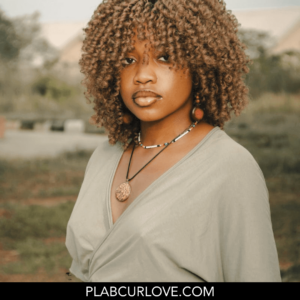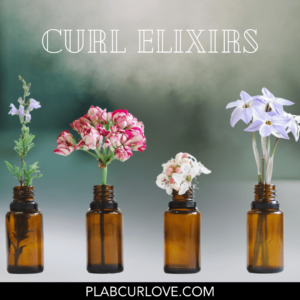Blog
From Oils to Butters: The Best Moisturizing Ingredients for Curls

Navigating the world of curly hair care can be akin to dabbling in alchemy. A myriad of ingredients tout their efficacy in transforming dry, frizzy curls into luscious, well-defined spirals. But which elixirs truly possess the magic to unlock your hair’s most radiant form? Here, we’ll unravel the mysteries… From Oils to Butters: The Best Moisturizing Ingredients for Curls.
Unveiling the Secrets of Moisturizing Elixirs
What is it about oils and butters that make them a curly girl’s best friend?
The curl community swears by the golden duo of oils and butters when it comes to hydration. Their rich, emollient properties act as a barrier on the hair, sealing in moisture and preventing the dreaded frizz. But each member of this dynamic duo has its specialty. Oils, for instance, are lighter and penetrate the hair shaft, offering nourishment from within. Meanwhile, butters, with their thicker consistency, are excellent at coating the hair’s surface, providing lasting softness and sheen.
Which ingredients work best for different curl types and textures?
Not all curls are created equal, and neither should their care regimen. For loose, wavy hair, lighter oils like argan or jojoba may be sufficient to maintain elasticity and a carefree bounce. Conversely, tight coils and kinks crave the intense moisture of shea butter or castor oil to combat dryness and keep their shape defined. Moderation is key, as using too much can result in weighed-down curls or a greasy look.
Crafting the Perfect Potion for Your Curls
When should you use a hot oil treatment, and how often should this be done?
A hot oil treatment can be a curly-haired person’s occasional indulgence, especially when the tresses are in dire need of TLC. This spa-like ritual involves heating an oil of your choice and gently massaging it into your scalp and hair. With a warm towel to lock in the heat, the treatment can penetrate more deeply, rejuvenating even the driest of strands. However, don’t overdo it; once a month is plenty to avoid any potential buildup.
What are the benefits of incorporating butters into your weekly routine, and how can you adapt this to the seasons?
Butters bring deep hydration, making them perfect for weekly use, particularly during dry or colder months. They help to combat the increased static and dryness that many experience in winter. In the warmer seasons, lighter butters such as mango or cupuacu can be used to prevent moisture loss without the heaviness associated with thicker varieties.
Sublime Curl Care, the Natural Way
What are some plant-based alternatives to commercial moisturizing agents, and how do they stack up?
Monoi de Tahiti oil made from soaking petals of Tahitian gardenias in coconut oil, or the oil extracted from the seeds of the moringa tree, are two examples of natural alternatives that offer similar benefits to their synthetic counterparts. They provide nourishment, protection, and hydration without compromising the integrity of plant-based or ethical hair care.
What plant ingredients should you avoid according to your specific hair needs?
While there is an abundance of excellent plant ingredients for curly hair, it’s also essential to recognize those that may not be suitable. For example, individuals with protein-sensitive hair might want to avoid ingredients like wheat germ oil or botanical extracts known for their high protein content. For those prone to buildup, heavy butters or oils like coconut might need to be used sparingly.
The Science of Curl Elixirs

How can you truly understand the label of your hair products and avoid being misled by marketing jargon?
Understanding the curly-hair language involves a deep-dive into ingredient lists. Look for ‘top-billed’ ingredients, as these are usually the bulk of the product. Be wary of greenwashing – buzzwords like ‘organic’ or ‘natural’ don’t always guarantee a product’s purity or effectiveness. Research and simple, clean ingredient lists should be your guides.
What are the best ways to combine ingredients for maximum impact and retain the health benefits of each?
Experimentation with different ingredient combinations is the fun part of creating your own hair potions. Ideally, mix ingredients that complement each other’s effects. For example, blending a penetrating oil like coconut with a surface-acting butter such as avocado can provide the best of both worlds. Heat can be used to ensure a homogeneous blend and aid in application.
Sustaining the Curl Community
What role do sustainability and ethical considerations play in the choice of hair care ingredients?
As the world gravitates toward a more sustainable future, the quest for beautifully maintained curls shouldn’t come at the cost of the environment. Ingredients that are sustainably sourced and ethically traded, like shea butter from fair-trade cooperatives, not only benefit your hair but also support communities and preserve natural habitats.
What is the environmental impact of hair care products, and how can you reduce your carbon curl-print?
The production and disposal of conventional hair care products can be incredibly wasteful. Shifting towards eco-friendly packaging or even ditching the bottle entirely with solid shampoos can significantly reduce your carbon footprint. Making your own products at home with a few essential ingredients can be cost-effective, empowering, and kind to the Earth.
The Path to Luscious, Healthy Curls
Moisturizing ingredients for curly hair come in a plethora of options, each offering unique benefits. By taking the time to understand which elixirs are best suited for your curl type, the periodicity of treatments, and the sustainability of your choices, you can ensure that your locks exude health and vibrancy. Remember, the real secret to effective hair care isn’t found in just one product, but in the informed and intentional mixtures you create along the way.
10-Steps to Perfect Hot Oil Treatments
- Choose an oil that suits your hair type and needs (e.g., argan for fine hair, castor for dry hair).
- Warm the oil by placing it in a bowl of hot water or using a microwave for 10-15 seconds.
- Section your hair into manageable parts.
- Protect clothing with a towel or cape.
- Apply oil to scalp first, massaging gently.
- Distribute remaining oil through mid-lengths and ends, ensuring full coverage.
- Wet a towel with hot water, wring out excess, and wrap around head like a turban to trap heat.
- Leave on for 20-30 minutes before rinsing.
- Shampoo and condition as usual.
- Repeat once a month for maintenance, adjusting frequency depending on hair’s needs.
TL;DR:
- Incorporating butters into your weekly routine can bring deep hydration and combat dryness.
- Plant-based alternatives like Monoi de Tahiti oil and moringa oil offer similar benefits to synthetic moisturizing agents.
- Understand hair product labels by researching ingredients and avoiding greenwashing.
- Experiment with ingredient combinations for maximum impact and use heat to aid in blending.
- Consider sustainability and ethical considerations when choosing hair care ingredients.
- Reduce carbon footprint by using eco-friendly packaging or making homemade products.
- The key to perfect hot oil treatments is choosing the right oil, massaging into scalp, leaving on for 20-30 minutes, and rinsing before shampooing and conditioning.
Happy curling!
Ultimate Curly Hair Guide!

Transform your curls today with the ultimate guide to perfect curls—get your copy now! 🌀📚✨
Buy Now